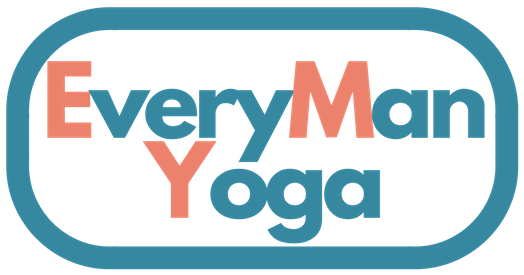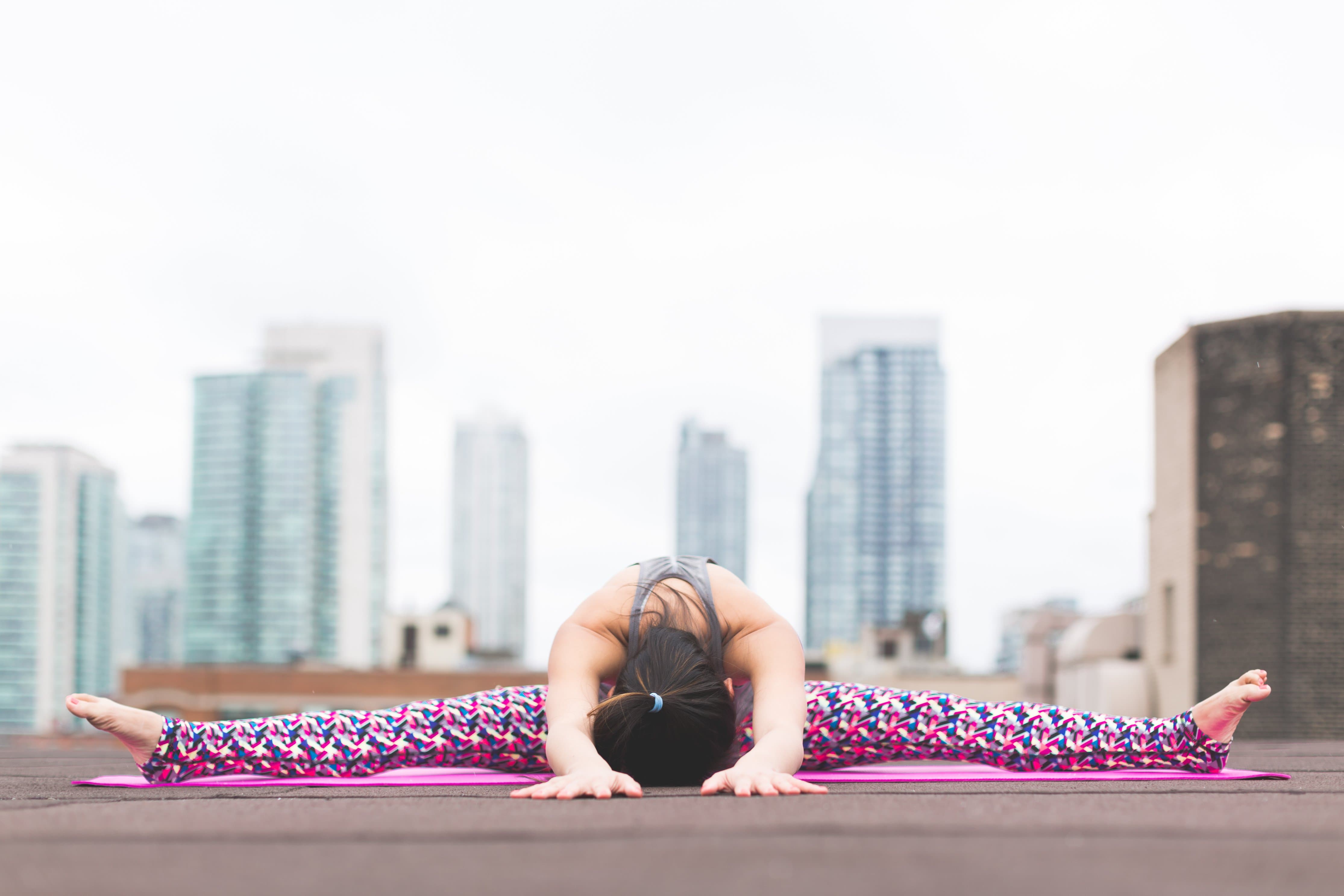“According to the Buddha, we must begin by experiencing life as it is. We must see the truth of suffering, the reality of dissatisfaction. We cannot attempt to ignore it and examine only the glorious, pleasurable aspects of life. If one searches for a promised land, a Treasure Island, then the search only leads to more pain…we must begin by facing the reality of our living situations. We cannot begin by dreaming.” -Chögyam Trungpa
Everyone has that one friend on Facebook or Instagram: putting their feet behind their head, pushing up into handstand effortlessly, doing the pancake splits (see photo above) while eating actual homemade non-GMO vegan pancakes.
Well, there are three things I can say about that person for certain:
- They either worked really fucking hard to learn how to do those things (pancakes included), or they are naturally flexible
- They have a body type that allows them to do those things
- There is a high likelihood that they are prone to injury due to excessive flexibility– but they would never mention that
Not everyone is built to do the extreme stuff in a yoga class, and that’s okay. Yoga was not created to impress your friends, family and secret admirers on Instagram. Yoga was created as a moving meditation in which one can contemplate the reality of their current situation, just as mentioned in the Trungpa quote above.
Your Yoga Practice Is Called ‘A Practice’— Treat It Like One
I often don’t teach deep backbends in my classes, and I only teach difficult inversions if there is plenty of room for error. Oftentimes I would prefer to teach people how to fall down appropriately rather than stay up and tempt injury.
My reasoning for this is that there is always at least one person in class who is a more advanced yoga practitioner, and nine times out of ten that person will not forgo the opportunity to show off a little bit with some yoga acrobatics. There’s nothing wrong with that…unless you don’t actually know what you’re doing. These folks have earned it; it means they have practiced enough or have a preternatural ability to do something challenging SAFELY.
However, the main reason that I don’t often teach these things is for the sake of YOU, yoga EveryMan.
It’s a difficult thing walking into a yoga studio and seeing lots of people who are more limber, elegant and far less sweaty than yourself. It’s equally difficult to have to sit out the scary stuff, which is why most people don’t. Never done wheel pose before? Maybe you’d be best served to be an observer rather than an injured participant your first couple times in a yoga class.
That doesn’t mean you shouldn’t try new things. Mainly what I’m trying to say is if something feels sketchy or you can tell some little (or big) apparatus is about to give in your wrist, knee, neck, etc., then you need to back off. You’re simply not ready yet.
Always Going For Broke Satiates Your Ego, It Does Not Nourish Your Body
I’m pretty sure I’ve said this in previous posts, but I’ll repeat it because it’s important: Yoga is not a video game. There is no final battle of wills where you triumph and are suddenly ‘the best.’ You do not win at yoga, no matter how hard you try. It is a continuous practice that is meant to elicit a sense of wonder and contemplation of where your mind and body are, moment to moment.
For this reason, consider your needlessly competitive yoga tendencies to be like a sprint to a phantom finish line that keeps moving further away, like a mirage in the desert. You’re only going to wind up exhausted and more than likely struggling to keep moving.
Part of this obsession with competition is simply based on the structure of our society, where ‘the best’ is a question of conquest and dominance. You see it everywhere from competitive sports to awards ceremonies, to business culture and politics. However, the only thing that competition will stimulate in the yoga room is injury and a short-lived ego-boost, which is essentially like a sugar rush for your spirit— it is ALWAYS short-lived and mostly meaningless.
Think about this for a moment: if you go to yoga every day with the goal to outshine everyone by trying to one-up every other person in the room, you are never actually considering what is happening in your inner environment.
For example, if you walk into the classroom thinking “I’m gonna be sooooo good” then you’re clearly not living in the moment at all, you’re living in the future. I would also guess that you are probably thinking about stuff you have to do after class when you make your way to Savasana, too, instead of allowing your body and mind to relax for once.
Most crucially, you’ve probably been more focused on what the person next to you is doing, rather than trying to breathe deeply and get the most out of the poses you really need while you’re in them.
Instead of living through this self-fulfilling prophecy time after time, try this: breathe deeply in every pose without looking around the room, sit out the show-offy stuff even if you know you can do it and try closing your eyes a few times throughout the class to see what’s going on in your head. Once you tune out your sense of competition, you can tune into what’s the root of your wants and needs.
Yoga in Sanskrit means “to yoke” the breath with movement. In no yogic text does it mention that you have to try harder than the person next to you. In fact, it’s more the opposite: yoga is about finding effortlessness in a difficult situation. That’s what you should be able to carry with you when you’re out in the world, not doing yoga.
It is satisfying—dare I say “pleasurable”— to complete a hard yoga pose, but if part of our mindfulness goal is to see the reality of dissatisfaction, then there is just as much benefit in acknowledging when you’re living in the space of ‘can’t-quite-get-there-yet’. It’s okay if you can’t do the hard stuff.
If you’re not there today, you have just found a gauge for where you are right now in this very moment in time, not after class, or ‘when I can do this pose, things will be perfect and complete.’
There is no “I am complete” moment in yoga…or most other things for that matter. Try marinating in the beauty of who you are in the present moment.
If you CAN do cool tricks on your yoga mat, that’s great! Just make sure you’re doing it for the right reasons. And more importantly, do it to be present in the pose, not to show off for anyone else but you. If you’re breathing like you have a plastic bag over your head in every posture, it doesn’t matter if you have your feet behind your head. It means that you’re still just a beginner, whether you’ve been doing it for ten days or ten years.

